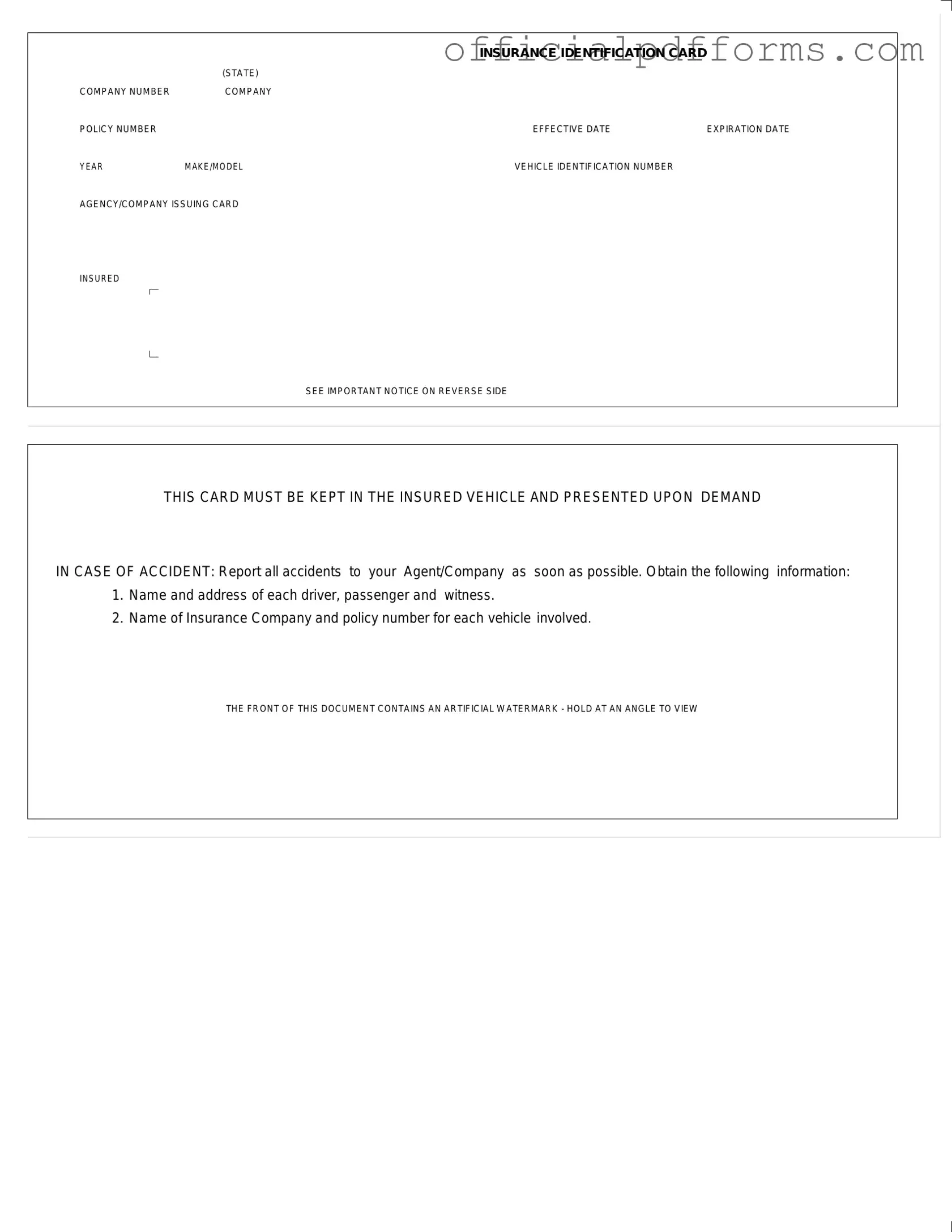Fill in a Valid Auto Insurance Card Form
An Auto Insurance Card is an important document that proves you have the necessary insurance coverage for your vehicle. It contains essential information such as your policy number, effective dates, and vehicle details. Keeping this card in your vehicle is crucial, as you must present it if you are involved in an accident.
To ensure you have the correct information, fill out the form by clicking the button below.
Access Form Online
